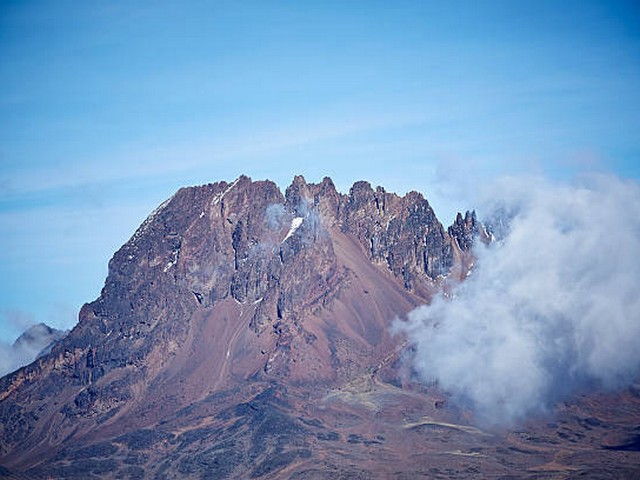How To Manage Trekking Budget For Kilimanjaro
Scaling the majestic heights of Mount Kilimanjaro, the roof of Africa, is a dream etched in the hearts of many adventurers worldwide. Whether you’re a seasoned trekker or a curious novice, the journey to the summit of Kilimanjaro is a potent mix of breathtaking vistas, unique wildlife, and profound personal challenge. However, amidst the excitement and anticipation, it’s critical to address a practical aspect of your adventure: managing your trekking budget. At Kilimanjaro Centre for Trekking and Ecotourism (KCTE), we understand the importance of planning and are here to guide you through optimizing your budget for an unforgettable experience.
Why Budgeting for Your Kilimanjaro Trek is Crucial
Trekking Kilimanjaro involves several costs, including permits, gear, guides, porters, and accommodations. Without a well-managed budget, you might find yourself facing unexpected expenses that could overshadow your journey. Effective budget management ensures that you enjoy every moment on the mountain without financial worries.
Understanding Kilimanjaro Trekking Costs
Permits and Fees
Every trekker is required to pay park fees, which include conservation fees, camping/hut fees, rescue fees, and crew (guide and porter) wages. These fees are mandatory and are used to maintain the park and ensure the safety and employment of local staff.
Gear and Equipment
The right gear is essential for a successful summit attempt. This includes appropriate clothing, hiking boots, sleeping bags, and personal items. While some items can be rented or purchased in Tanzania, it’s crucial to plan this part of your budget according to what you need to buy or rent.
Travel and Accommodation
Consider the costs of flights to and from Tanzania, as well as accommodation before and after your trek. It’s often possible to find package deals that include these elements, which can lead to significant savings.
Tips to Economize Your Kilimanjaro Trek
Select the Right Route
Kilimanjaro offers several routes, each varying in difficulty, duration, and cost. Shorter routes like Marangu and Machame can be less expensive but are also more challenging due to quicker ascents. Longer routes like Lemosho and Northern Circuit offer a better chance for acclimatization and a higher success rate, but they may cost more. Choosing the right route with KCTE can balance cost and success rate effectively.
Book with a Reputable Tour Operator
Booking your climb with a reputable and certified operator like Kilimanjaro Centre for Trekking and Ecotourism (KCTE) not only ensures safety and reliability but can also be cost-effective. We offer transparent pricing, no hidden fees, and provide comprehensive packages that cover most necessities.
Group vs. Private Treks
Joining a group trek can significantly reduce costs as expenses are shared among more trekkers. If you prefer a more personal experience, a private trek might be right for you, though it is typically more expensive.
Plan Your Travel During Off-Peak Seasons
The peak trekking seasons on Kilimanjaro are from June to October and from December to March. Planning your trek during the shoulder months (like November or April) can result in lower costs and less crowded trails.
Renting vs. Buying Gear
Evaluate which pieces of equipment can be rented in Tanzania versus those you need to purchase. Renting can drastically reduce your expenses, and rental gear from KCTE is guaranteed to be high-quality and suitable for Kilimanjaro conditions.
Frequently Asked Questions
What is the best time to climb Kilimanjaro for budget travelers?
The best times for budget travelers are the off-peak months of April, May, and November. These months offer the advantage of lower prices and fewer crowds.
How much should I tip the guides and porters?
Tipping is an essential part of the climbing culture on Kilimanjaro. The recommended tip is about 10-15% of the total cost of the trek, distributed according to the size of the crew and the duration of the climb.
Can I pay for my trek in installments?
Yes, at KCTE, we offer the flexibility to pay for your trek in installments. This can help manage your budget more effectively and ensure that the cost of the climb is more manageable.
Is travel insurance necessary?
Yes, travel insurance is crucial for your safety and peace of mind. It should cover high-altitude trekking and possible medical evacuation.
Why Book Your Kilimanjaro Adventure with KCTE?
At Kilimanjaro Centre for Trekking and Ecotourism, we are not just committed to helping you reach the summit; we aim to make your journey as memorable and hassle-free as possible. Our expert guides, comprehensive trek packages, and commitment to safety ensure that every dollar spent is worth the extraordinary experience you’ll gain.
Ready to embark on your Kilimanjaro adventure? Manage your trekking budget effectively and book your journey with KCTE. Embrace the thrill of conquering Kilimanjaro without breaking the bank. Visit our website or contact us today to plan your budget-friendly trek to the top of Africa!




